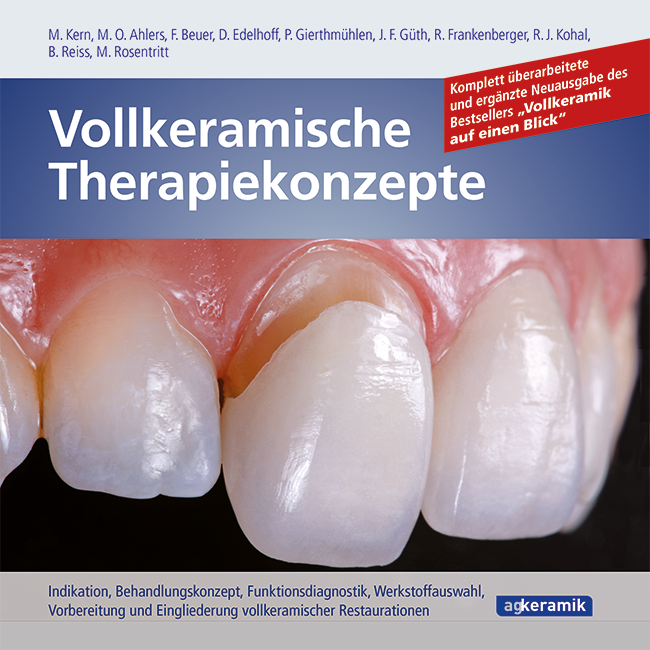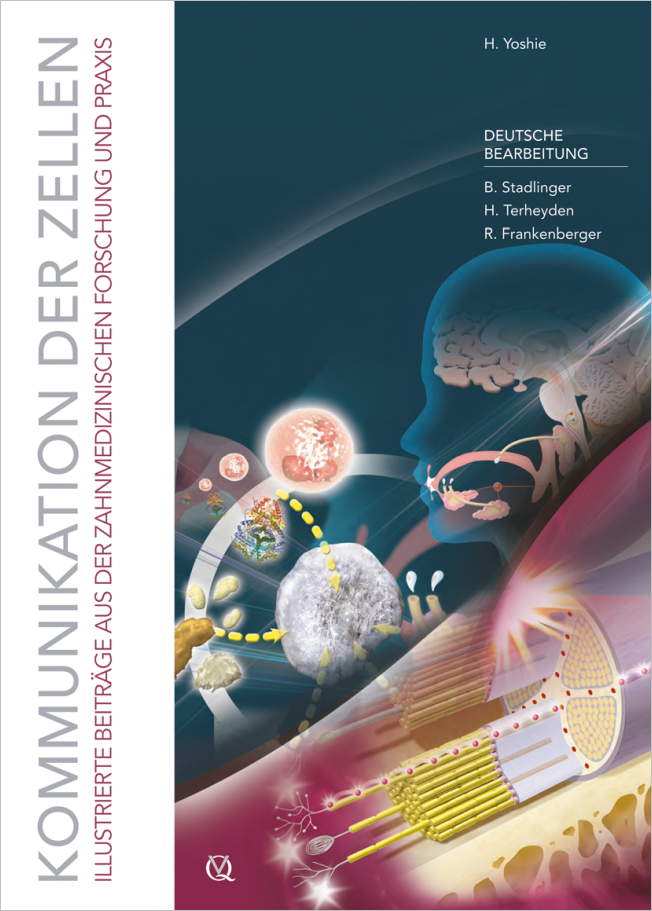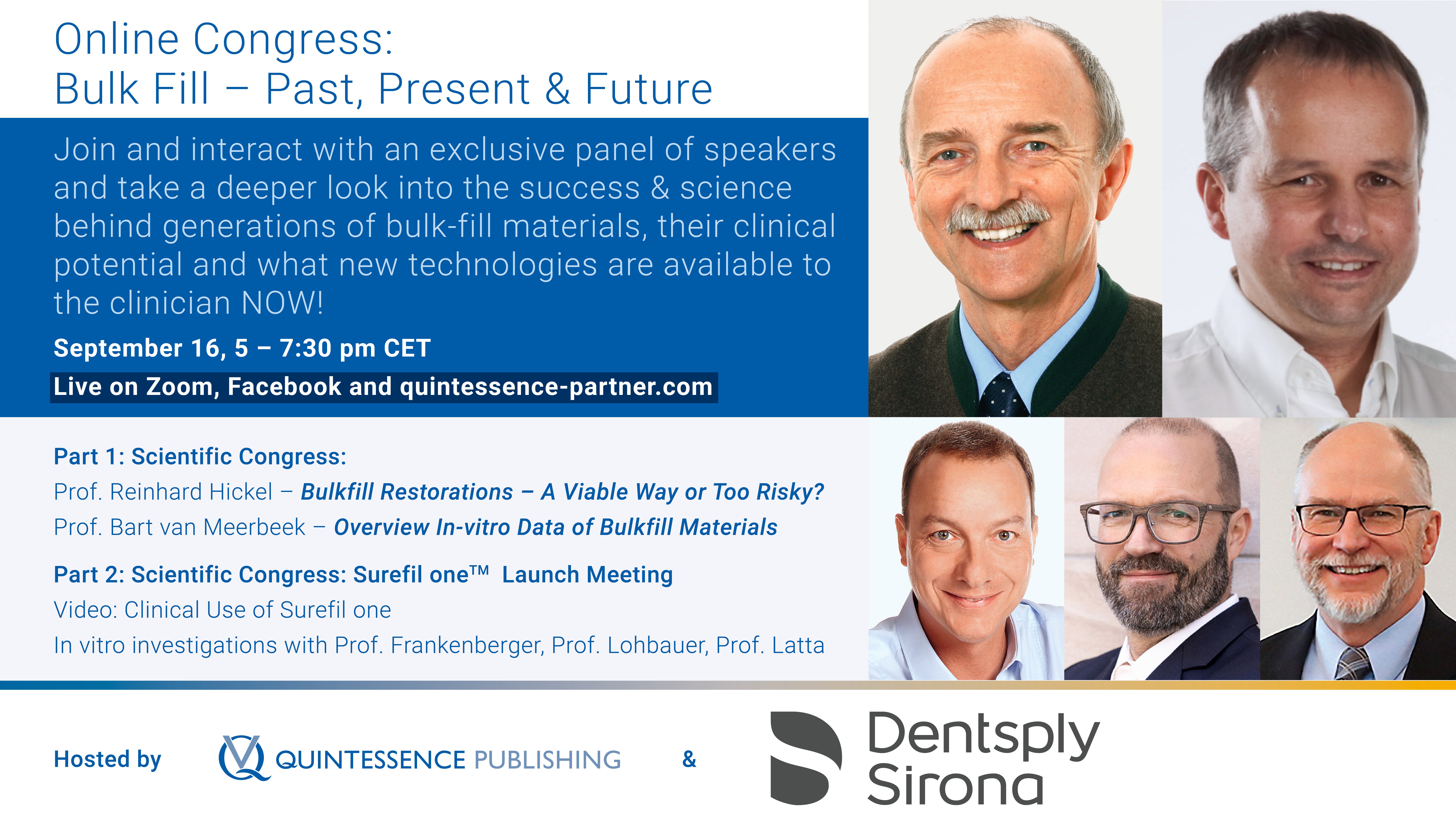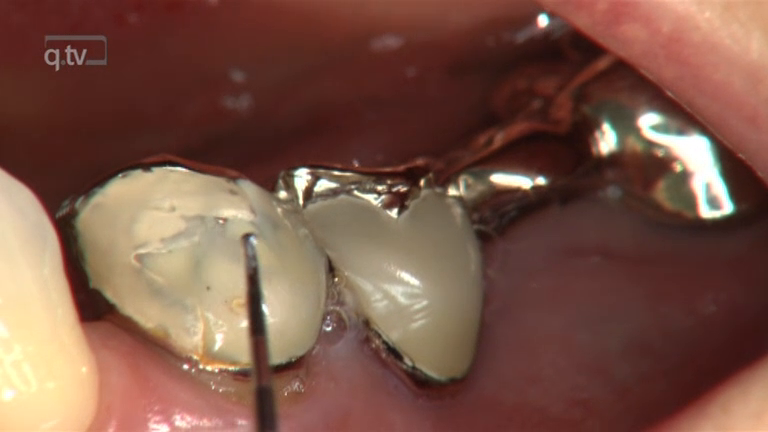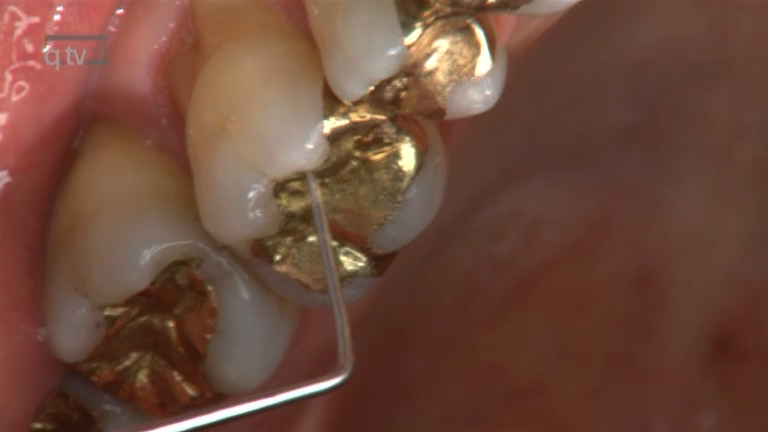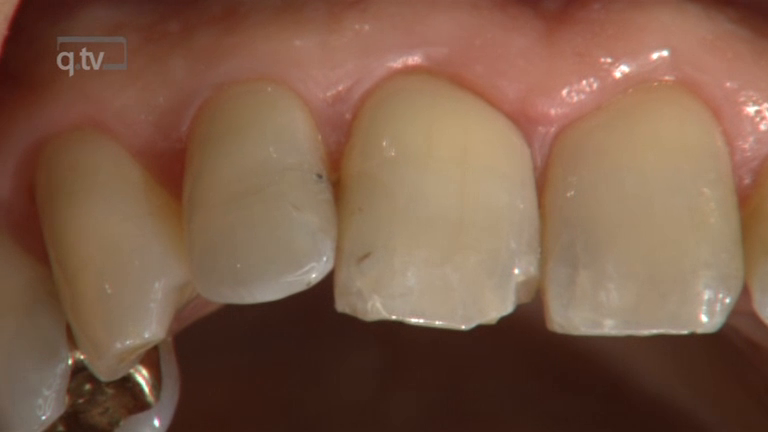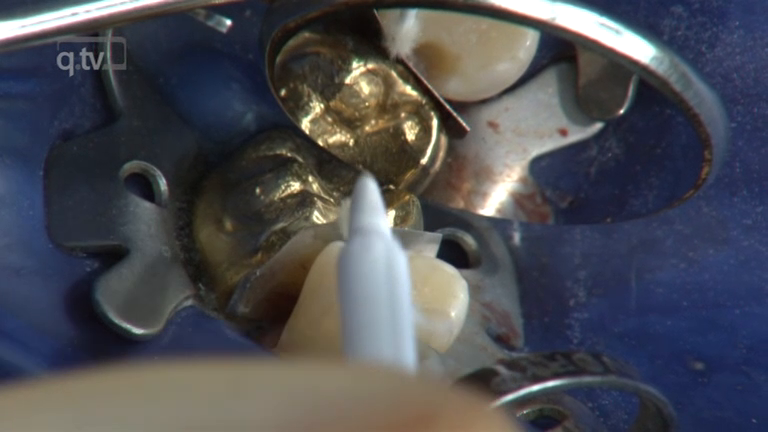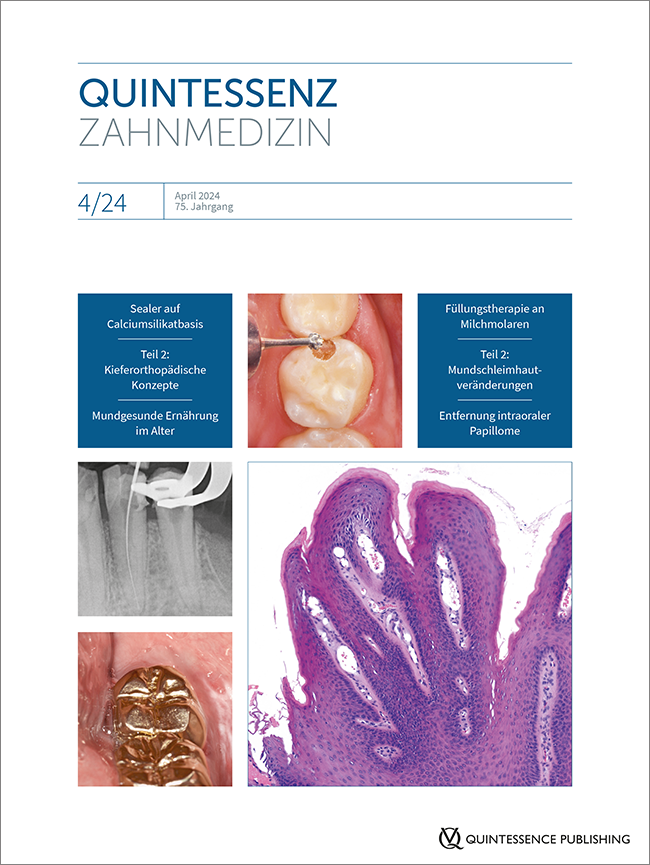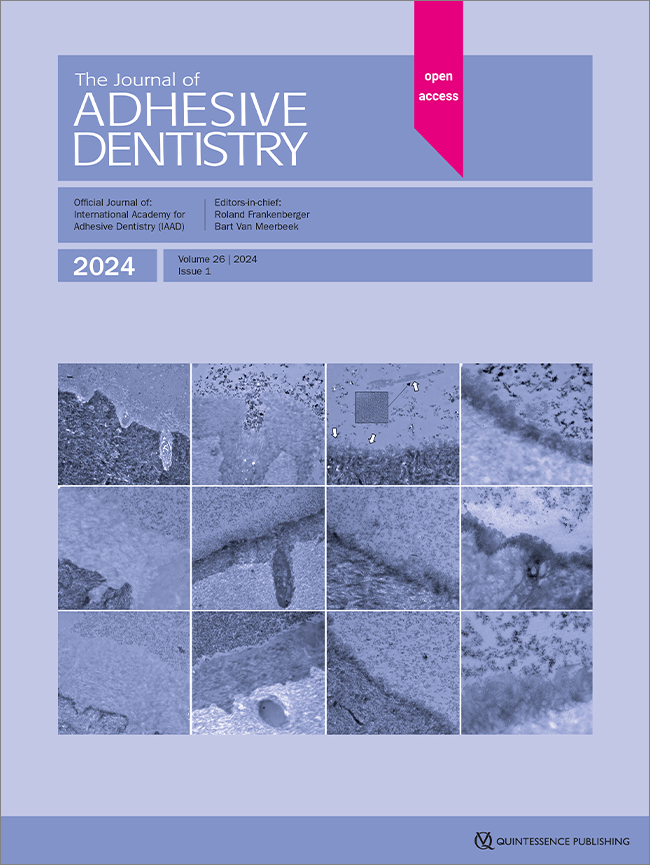Quintessenz Zahnmedizin, 4/2024
EditorialPages 247, Language: GermanFrankenberger, Roland
Quintessenz Zahnmedizin, 4/2024
KinderzahnmedizinPages 273-278, Language: GermanFrankenberger, Roland / Rösler, Larissa / Winter, Julia / Kühnisch, Jan
Sowohl die Adhäsivsysteme als auch die Komposite haben in der letzten Dekade eine signifikante Verände-rung erfahren. Während die Adhäsive trotz Vereinfachung vor allem am Milchzahndentin heute sehr gute Verbundfestigkeiten bieten, sind es bei den Kompositen vor allem die Bulk-Fill-Varianten, die in der Kinderzahnmedizin aufgrund ihrer schnellen Applikation beliebt sind. Diese Übersicht behandelt die wichtigsten Innovationen in der restaurativen Therapie von Milchzähnen im Hinblick auf Simplifizierung und Effektivität: Bei guter Kenntnis der Schlüsselmechanismen für die Mikroretention (Konzentration auf die Dentinhaftung, Verzicht auf Phosphorsäureätzung) können Milchmolaren heute schnell und effektiv mit Universaladhäsiven und Bulk-Fill-Kompositen restauriert werden, bei kleinen bis mittelgroßen Klasse-I- und Klasse-II-Kavitäten in der Regel in einer Schicht. Auch selbstadhäsive Hybridmaterialien zeigen heute bereits vielversprechende Resultate, hier besteht jedoch wie an bleibenden Zähnen noch Forschungsbedarf. Im Bereich der Matrizen bei Klasse-II-Restaurationen gilt heute – neben der Automatrix – die Cervix-Matrize mit ihrer überaus einfachen Handhabung als Goldstandard für Milchmolaren.
Manuskripteingang: 27.02.2024, Manuskriptannahme: 01.03.2024
Keywords: Milchmolaren, Adhäsive, Universaladhäsive, Komposite, Kompomere, Bulk-Fill
Quintessenz Zahnmedizin, 3/2024
EditorialPages 163-164, Language: GermanFrankenberger, Roland
Quintessenz Zahnmedizin, 2/2024
EditorialPages 79, Language: GermanFrankenberger, Roland
Quintessenz Zahnmedizin, 1/2024
EditorialPages 3, Language: GermanFrankenberger, Roland
Quintessenz Zahnmedizin, 1/2024
EndodontiePages 19-24, Language: GermanFrankenberger, Roland
Es ist in Anbetracht einer immer klagefreudigeren Patientenschaft fast schon eine Utopie, zu glauben, man könne sich zu 100 % vor einer Klage schützen. Dieser Beitrag skizziert – gestützt auf 20 Jahre Erfahrung als Gerichts-gutachter („Sachverständiger“) – einen Leitfaden („Prozess-Vermeidungs-Strategie“, PVS), mit dem es trotzdem gelingen kann, dem Gerichtssaal fernzubleiben. Neben der Darstellung überraschend häufiger Behandlungsfehler stehen dabei primär charakteristische Verhaltensmuster im Fokus, die dringend vermieden werden sollten, um nicht in langwierige, teure und vor allem nervenaufreibende Prozesse getrieben zu werden. Die drei zentralen Aspekte sind hierbei:
1. eine vernünftige Kommunikation von der Anmeldung bis zum Behandler,
2. eine stringente Dokumentation und
3. das Vermeiden von irrationaler Rechthaberei und falschem Stolz.
Diese und weitere interessante Punkte werden anhand von konkreten, zu 100 % echten anonymisierten Fallbeispielen mit dem Schwerpunkt Endodontie plastisch im Sinne einer Erlebniserzählung erörtert.
Manuskripteingang: 11.08.2023, Manuskriptannahme: 19.10.2023
Keywords: Gerichtsverfahren, Prozess, Klage, Leitlinien, Justiz, Behandlungsfehler, „grob fehlerhaft“
Quintessenz Zahnmedizin, 7/2023
EditorialPages 549, Language: GermanFrankenberger, Roland
Quintessenz Zahnmedizin, 7/2023
Zahnmedizin allgemeinPages 616-619, Language: GermanFrankenberger, Roland / Meckes, Oliver / Ottawa, Nicole
REM-Aufnahmen zur Kommunikation der ZellenQuintessenz Zahnmedizin, 6/2023
EditorialPages 457, Language: GermanFrankenberger, Roland
Parodontologie, 4/2023
Pages 415-426, Language: GermanJung, Katja / Frankenberger, Roland / Schlüter, Nadine / Ganß, Carolina
Patienten zeigen im Verlauf einer Parodontitistherapie häufig exponierte Wurzeloberflächen und vergrößerte Interdentalräume, die schwierig zu reinigen sind und spezielle Speiseretentionsbereiche darstellen. Die vulnerablen Wurzeloberflächen sind daher spezielle Kariesrisikoareale. Betroffene Patienten sollten idealerweise schon zu Beginn der Behandlung, spätestens aber in der unterstützenden Parodontitistherapie auch intensiv kariespräventiv beraten und betreut werden. Gute Mundhygiene und eine mundgesunde Ernährung stellen gemeinsame Faktoren dar, die Karies vermeiden und den Erfolg der Parodontitistherapie bestimmen können. Die Fluoridapplikation durch Fluoridzahnpasten sollte risikoadaptiert durch zusätzliche häusliche (z. B. 5.000-ppm-Fluoridzahnpaste) und professionelle Anwendungen (z. B. konzentrierte Gele/Lacke oder Silberdiamminfluorid) ergänzt werden. Liegt bereits Karies der Wurzeloberflächen vor, sollte möglichst versucht werden, die Läsionen durch vorsichtige Exkavation, Glättung und intensive Präventionsmaßnahmen zu arretieren. Sind die Läsionen progredient, kommen direkte oder indirekte metallische oder zahnfarbene Versorgungen infrage, falls erforderlich in Verbindung mit Verfahren zur Anhebung der zervikalen Stufe. All diese Maßnahmen sollten in Abhängigkeit von den Behandlungsmöglichkeiten, der Adhärenz und dem sozialen Umfeld der Patienten individualisiert werden.
Manuskripteingang: 08.08.2023, Annahme: 12.10.2023
Keywords: Wurzelkaries, Prävention, Mundhygiene, Ernährungsberatung, individualisierte Konzepte, restaurative Versorgung, Parodontitistherapie




